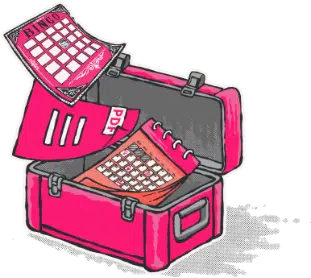Here is our guide to best practices for your new employee onboarding process.
Onboarding process is the systematic and thoughtful transformation of prospective employees into high-performing team members. Properly onboarded new workers gain the knowledge, connections, and resources needed to perform at their highest level. Tips for a successful onboarding include starting before the first day of work and scheduling and induction. The purpose of these actions is to get the new employee started and maximize the chances of success.
You can use these tips to conduct successful remote onboardings or intern orientations. For more advice, check out this list of onboarding books and these employee onboarding ideas.
This list includes:
- employee onboarding challenges
- tips for employee onboarding
- employee onboarding frameworks
- employee onboarding objectives
- employee onboarding program examples
Here we go!
Guide to new employee onboarding best practices
Taking up a new job might be challenging. Employee onboarding program examples help new workers start strong and settle in new positions. Here are a few tips for employee onboarding.
1. Start Before the First Day of Work
The onboarding process begins when your applicant accepts the job offer. There is a significant time window for employee engagement in the two to three weeks between accepting an offer and starting work. You can take advantage of that time to create a good impression with the new hire.
Employers can send a welcome email to begin the onboarding process and establish a positive working relationship with new employees. The email can include content that reflects the company’s principles. You can initiate dialogue by encouraging the new hire to ask questions. Also, sending a welcome care package to new employees is a nice touch.
These measures may go a long way toward making new employees more comfortable and confident on their first day of work, whether they work onsite or virtually.
2. Simplify Paperwork Experience
Paperwork and documentation play a significant role in employee onboarding frameworks, from background checks to personal information and record of previous employment. New employees often find the onboarding process, from supplying the necessary data to filling out the required documents, to be a draining experience.
Employees spend their first few days getting to know coworkers and learning the ins and outs of their new roles. However, completing excessive paperwork and being bogged down in red tape can undermine the newly hired employee’s self-esteem and make new team members even more nervous.
Companies can opt for automated onboarding documentation to enable HR workers to get more time to interact personally with new employees. This act would allow new hires to complete paperwork at their own pace. Admins can schedule subtle reminders to ensure employees complete necessary documents. Ultimately, this change can have a significant impact on employee satisfaction.
Here is a list of HR software that can help to facilitate this process.
Get our free team building toolbox
- icebreaker games
- bingo cards
- DIY guides
 by teams at FedEx, Amazon, Deloitte and 73,930+ others
by teams at FedEx, Amazon, Deloitte and 73,930+ others

3. Implement Pre-boarding for Employees
Nowadays, technology enables new employees to get familiar with coworkers and the organization even before work starts. For instance, you can plan a pre-boarding video chat with new staff to introduce coworkers and electronically get signatures on the onboarding paperwork. While it is common for employers to dread first-day introductions, a video call may ease the tension and allow for a more productive start.
An alternative way to handle introductions is to create a team video and forward it to the new employee. In these videos, the team members can introduce themselves and express excitement about knowing and working with the newest member of their team. This option makes remote onboarding more convenient.
Making videos for new employees may seem daunting, but with employee onboarding solutions, you can automate the process of creating and distributing these videos. The HR staff spends less time introducing new workers to their teams with this approach.
As part of the pre-boarding process, team leaders may also provide new hires with vital information like a business handbook.
4. Assign an Onboarding Companion
Assigning a new hire an onboarding companion is another helpful way to solve employee onboarding challenges. This companion is an employee who understands how the company runs. An onboarding buddy helps a new employee acclimate to the workplace and relays company policies and procedures. When paired with a friend, new hires will have an easier time adjusting to the new work environment.
Using HR software lets you pair new hires with the best “buddy” inside your organization depending on duties or team dynamics. You can also create guidelines for how the onboarding buddy can successfully introduce the new hire to company procedures and culture.
It is advisable to pair the new employee with a buddy who has the time and energy to give a tour of the office. Be sure to send periodic reminders to the buddy so they remember to monitor the new hire’s progress. By making it clear to both the friend and the new employee that this connection is temporary, participants are likely to give the program full attention.
5. Make a Checklist for the First Day
On their first day on the job, new employees want to make a positive impression. However, there is a constant tug-of-war between wanting to offer their best effort and completing necessary paperwork and startup tasks. This tussle may lead to a very exhausting first day for new employees and impact their experience adversely.
One of the best practices for employee onboarding is to create a first-day checklist and send it to the new employee in advance to prepare them for the first week. You can create and share this checklist with the new employee with an onboarding tool like ClickUp. Then, new team members can check off each item on the list upon completing the tasks.
6. Schedule an Induction and a Group Get-together
The HR department is responsible for conducting and completing the induction process and introducing the new employee to the team. Note that induction is not the same as onboarding, and it certainly cannot be a substitute for a thorough onboarding process. Induction is broad and involves steps to transform a new hire into an active employee.
You should create a clear induction plan, even if it is only a quick introduction to work briefs or weekly targets. For example, if you are sending an email with an induction scheduled, then include appropriate team members. This process helps new hires know the relevant team members and feel like a part of the company.
7. Develop Standard Operating Procedures (SOP)
An SOP binder offers information to help the new employee quickly reference other employees in the company or on their team. New hires can also use the SOP to check systems and procedures to improve their workflow and find frequently-used details to ease their job. Joining team members can refer to the SOPs throughout the first few months on the job. This resource can improve comprehension and give team members more confidence and autonomy.
8. Establish a Path to Career Advancement
Employees are more likely to stay with a company if they can identify clear prospects to advance their careers. Conversely, lack of professional advancement opportunities is a major reason many employees quit jobs.
To lay out career advancement opportunities, begin by outlining the specifics of promotion requirements. This gesture conveys that you are prepared to invest in your employees’ growth. Managers can develop custom journey maps for each new employee and meet to discuss professional progress at regular intervals. You set up employees for success when you set career objectives and outline steps to achieve them.
9. Intensify Professional Development Efforts
An effective professional training program is critical for retaining existing team members. Lack of growth opportunities is one of the most prominent factors for employee turnover. Employees are likely to quit jobs if they do not have satisfactory opportunities for professional development.
To improve your professional development programs, ask staff for input on what information would be most helpful and desirable. Then, work together to build courses that place workers at the center of their learning and keep them more engaged.
Note that several possibilities for professional development exist outside of the classroom. Examples of professional development efforts include providing peer coaching and mentoring and the chance to work on exciting new initiatives.
Here are lists of books on mentorship and guides to employee coaching.
10. Encourage Independence and Collaboration
One onboarding best practice is to ensure new hires have access to essential information. Giving new employees proper resources allows them to work independently with minimal supervision and signals your confidence in their abilities. A significant part of onboarding is getting new employees acquainted with their colleagues and helping them feel a part of the group.
You can give new employees real-world projects that require them to work with others on their team or even from other departments, rather than merely giving them study materials. This approach makes new employees feel included and noticed. Collaboration helps new hires experience the company’s culture in action and hastens integration into the organization.
11. Organize Module-based Training Sessions
Employee training and development programs are a terrific method to improve the staff experience and encourage employee progress. This model works for new hires and can improve employee retention.
You can give new employees the resources and instruction they need to grasp the company’s purpose, vision, and objectives. This training should help fresh arrivals settle into their new positions. You can also adopt module-based training sessions, where new employees may ask questions from the HR manager or the HR tool.
12. Automate your Frequently Asked Questions
Many companies do not place a high value on FAQ automation. However, even with an onboarding buddy and a detailed checklist, there are situations when the employee may still have additional questions. When this experience happens, FAQ automation becomes necessary.
Having an onboarding platform that includes a question management module in place, where all FAQs and their responses are accessible, is the best practice in this situation. As a result, the new employee is more likely to get accurate information from reliable sources rather than sloppy data from unreliable ones.
Using an AI-powered knowledge library in your employee onboarding solution allows employees to obtain answers to frequently asked questions conversationally whenever possible.
13. Get Feedback Through Surveys
Surveys help you assess employee sentiment. You should develop a survey for each stage of the onboarding process. Through this approach, you can learn about the employee’s experiences with the process, colleagues, and the workplace. The survey will give you insight into any program issues or pitfalls and help you to devise timely solutions. A good employee onboarding solution can create surveys by mapping different stages of the employee experience, including new hire onboarding. The survey result can help you understand how to improve the processes.
Here are sample employee experience survey questions.
14. Share Your Objectives and KPIs.
The new employee must be aware of the OKRs or Objectives and Key Results. Knowing the OKRs gives employees a sense of purpose and involvement and aligns them with company objectives. Employees’ first few months in the workplace are significant and set the stage for the remainder of the employee journey. Employees who understand and can communicate objectives and OKRs tend to make better judgments and be more responsible.
15. Follow Up Regularly
Employee onboarding should not end on clock-out time on that first day. It is critical to check in regularly to ensure employee satisfaction and productivity. Both employers and new employees benefit from regular check-ins. These touch-bases allow both parties to establish and manage expectations. Be sure to ask questions from the new hires to get feedback. You can plan check-in meetings at intervals from the first day to the third month on the job.
Check out this list of employee check-in questions.
16. Keep New Employees Motivated
One employee’s success can motivate other employees to strive for professional fulfillment. Companies with solid and fast onboarding processes tend to attract the most remarkable talent in the market. You can highlight the company’s vision, objectives, and development to motivate new employees throughout the onboarding process.
For more advice, here is a list of books on motivation.
17. Create a Strategy for the Probationary Phase
Employee onboarding should begin immediately after hiring an employee and continue until the end of their probationary period. It is necessary to have a well-thought-out strategy so that new hires may enter their probationary term with a positive attitude and approach rather than feeling anxious about the evaluation. The probationary period is a training phase. The employees should get all the required resources and techniques to acclimate with the organization’s vision and goals.
Here is a guide for giving employee feedback.
18. Celebrate Milestones
Employee appreciation is critical when the employee is just starting and requires significant encouragement to succeed. A simple thank you may go a long way. Employees continuously crave affirmation from others to improve performance. You can treat your staff to extraordinary acts of appreciation, for instance, by celebrating work anniversaries, team wins, or office birthdays with parties and lunches.
Here are some virtual employee recognition ideas.
19. Organize Personal Meetings
Effective communication is vital to give employees a positive experience. Virtual meetings, emails, and phone conversations have become a part of daily communication. However, it is still necessary to have frequent one-on-one encounters.
When you use an employee onboarding solution, the new hire’s experience needs not be totally digital. With one-on-one sessions, HRs can personalize the entire process and make it more relatable. Strive to establish a relationship and learn everything possible about the new hire’s feelings and ways to improve their experience.
Here is how to do one-on-one meetings remotely.
20. Invest in an Excellent Onboarding Software
The process of onboarding new employees varies from person to person, yet the fundamentals stay the same. Investing in technology that can automate repetitive tasks and allow you to focus on the human side of recruiting. Using competent HR managers and reliable employee onboarding software may assist build a solid onboarding strategy. You can consequently make the new employee’s journey and experience seamless.
21. Make a Good First Impression
One of the most crucial employee onboarding objectives is to make a positive first impression on a new employee. You create an initial impression during the new employee onboarding process. The impression comes from conveying the business’s mission statement and principles, and the welcome process.
The following actions can help you make an excellent first impression:
- Offer a tour, a map, and an organizational chart
- Gather documents, office supplies, and other essentials
- Check in frequently
- Provide SWAG (stuff we all get)
If you take special care to plan these details, then your new hires will feel encouraged and confident in their work.
Conclusion
Preparation is critical, as shown by these best practices. Planning ensures that new hires have positive experiences. Although it may seem overwhelming, employee onboarding best practices are pretty straightforward, especially if you leverage technology. You only need to develop a process. After that step, you will need to analyze and keep track of the data and adjust the onboarding process.
Next, check out team building best practices and employee engagement best practices.




